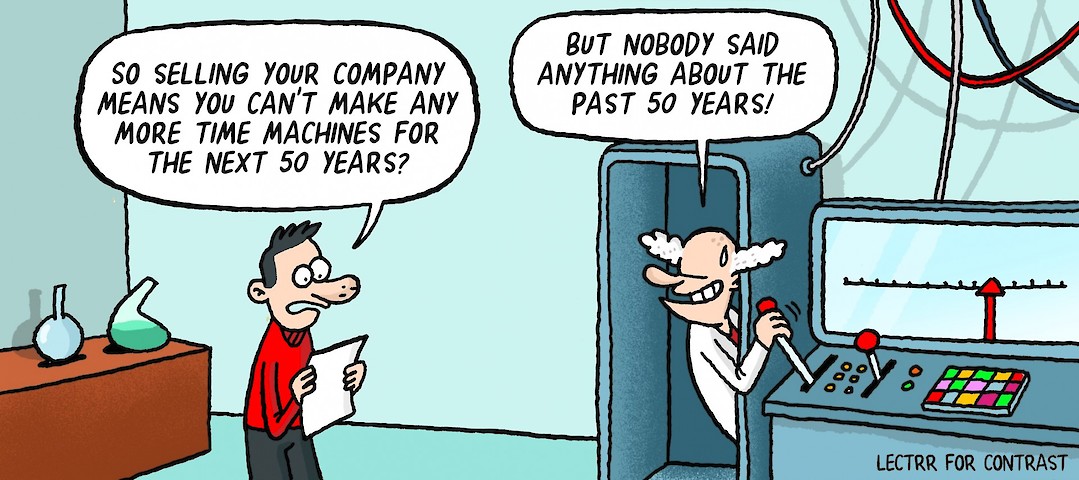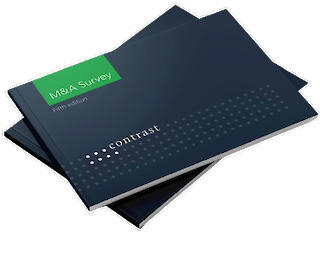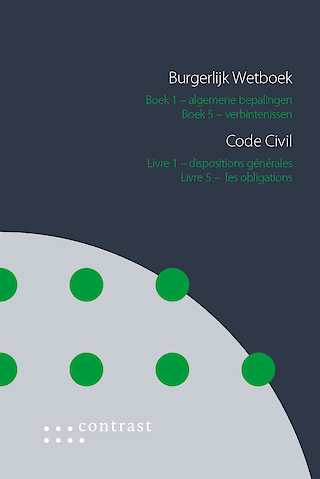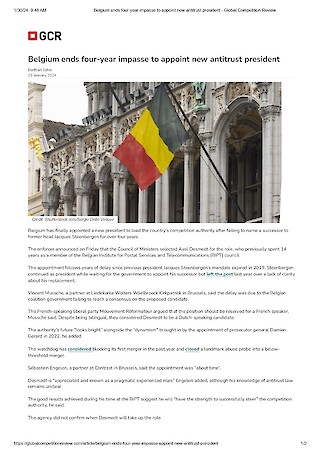In the Picture

Non-compete clauses and acquisition agreements revisited
April 2016Imagine . . .
Two years ago, you sold the shares of your company for a tidy sum. At that time, you were sure you would not have to – or want to – work ever again. All those years of hard slogging had finally paid off, and now: let the good times roll!
However, in the words of another old song, you don’t know what you’ve got till it’s gone, lately you are feeling that entrepreneurial itch all over again. You set up a startup in the sector where you have already proven your abilities. You contact all your old suppliers and customers and in no time, you are back in business.
A few weeks later, you receive a registered letter. The purchaser of your former company is naturally less than enchanted by your rediscovered entrepreneurial enthusiasm. He points out the non-compete clause contained in the share purchase agreement and urges you to cease your activities immediately. Back in the day you had indeed agreed not to engage in any competing activities for 20 years. According to your advisors, stipulating such a long period was never a valid thing to do anyway – but is that really so?
A brief clarification.
Upon the transfer of a company via share transaction (a share deal), the purchaser acquires the control over the company. The shares themselves constitute the legal object of the transaction, not the business. This means that the purchaser cannot invoke an implicit non-compete obligation on the basis of the Civil Code. Therefore, it is essential for the purchaser of shares to include a non-compete clause in the share purchase agreement itself. Otherwise, the seller would be free to start up a competing activity right after the takeover.
However, a non-compete clause may not be “excessive”, so the parties should limit a non-compete clause in terms of time, geographical scope and with regard to the excluded activities. For example, the term of the clause may not be longer than the period that is necessary to attract customers or bind them to you. According to the European Commission, the maximum duration of a non-compete clause is 2 to 3 years, so in practice a 3-year non-compete is most common.
Until recently it was accepted that a non-compete clause which is not sufficiently limited, was invalid and null and void. In that case, the purchaser lost all contractual protection against competing activities by the seller.
Because acquisition agreements often contain a so-called severability clause, an otherwise excessive non-compete clause could often be maintained in part. Such a clause provides that the validity of the contract is not threatened if one of its clauses is declared to be invalid. This clause is often supplemented by an obligation to replace an invalid clause by a valid one that comes as close as possible to the intention of the original clause.
Two decisions of the Court of Cassation in 2015 have now fundamentally altered this analysis. The Court confirmed that, subject to certain conditions, a judge can reduce or “moderate” an invalid non-compete clause to what he deems to be maximally allowable. It is strictly speaking not required that the contract contains a severability clause. The purchaser thus appears to have a bit more freedom when drafting an extensive non-compete clause.
The key question, however, is how the judge will apply this case law in practice. In a concrete case, how will he establish the limits of a maximally allowable non-compete clause? Will he adopt the view of the European Commission? Will he follow his own path? Because of this uncertainty, it remains very useful to combine a precisely drafted non-compete clause with a practically implementable severability clause.
Concretely.
- Make sure that the non-compete clause is adequately limited in terms of time, geographical scope and with regard to the excluded activities.
- Having a practically implementable severability clause in the contract increases the chances that an invalid non-compete clause will continue to exist at least in part.
- An excessive non-compete clause is not necessarily entirely invalid. The judge can declare the clause to be partially invalid or “moderate” it in such a way that a more limited non-compete obligation remains.
Want to know more?
- Our recently published book on ‘Share Purchase Agreements’ (Intersentia, 2016) deals with non-compete and severability clauses in acquisition agreements and contains practical models of such clauses.
- contrast’s corporate team has several publications on non-compete clauses in acquisition agreements.
- contrast’s M&A Survey reviews Belgian practice on non-compete clauses and many other aspects of corporate acquisitions.
- The October 2014 ‘In the Picture’ on ‘Company takeovers and non-compete clauses’ reviews the main areas of attention when drafting a correct non-compete clause.











